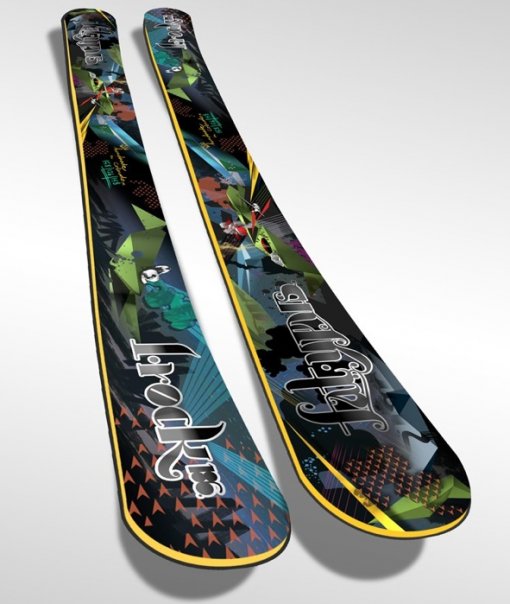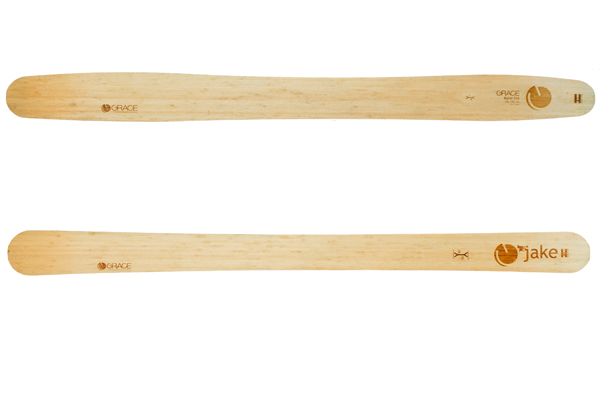News

By Jason Kornfeld, Staff Writer Posted 11 years ago February 4, 2013
Boutiquenomics
As SIA Denver comes to an end this weekend, many boutique ski companies reveal new skis hoping their models will capture the necessary market share in an extremely competitive industry. Nevertheless, like the snowboard boom 15 years ago, ski manufacturing appears to be facing saturation. Consequently, small companies are finding it difficult to start a business while others go bankrupt, such as CoreUpt Skis last year.
With 92 percent of the market controlled by the top 10 companies such as Rossignol, Atomic and Salomon, there is limited room for boutique ski makers.
Currently, there are 70 boutique companies in the United States and 20 are based in Colorado. These small companies pride themselves on making a product that is reliable and of the best quality. Although many of the major brand names make a great product, boutique companies have developed to fulfill the needs of more demanding skiers. Often included in the higher price tag on small-name brands are options such as a multiyear warranty, customization and durability. But, as the amount of small businesses increase, product differentiation becomes difficult, thus, hinting at a start of a crowded market.
Pete Wagner, founder of Wagner Skis, one of the pioneers of custom ski manufacturing, says success largely hinges on being able to define yourself as a company.
“It’s important to have some sort of sustainable competitive advantage. For us, it’s having a proprietary fitting system,” said Wagner. “Though ultimately, being one of the first to market the idea, has given us the advantage as well as the idea that we used a design platform that had previously been proven successful in a parallel industry (golf).”
“In a way we were not starting from scratch.”
Founder of Fat-Ypus Skis, Jared Mazlish, admits that although his company was an innovator in the boutique market with the super-fat ski, thus cementing their reputation, the companies that prevail in this market are able to combine marketing with a quality product.
“Essentially, it’s a combination of the business element of marketing, and doing it correctly, with providing what the consumer needs and wants,” said Mazlish. “The key is being able to balance marketing dollars with maintaining a quality product that continues progressing with the sport.”
Drew Rouse, a Core 7 skier for Grace Skis, a newcomer to custom ski manufacturing, says that the first couple of years were tough, but recently, the company has seen a surge in sales as a result of efficient marketing and it’s unique product.
“It takes two to three years to get a brand name out there if you aggressively market it,” said Rouse. “If your marketing is unsuccessful, even if you make a good product, the brand is not going to take off. It’s all about marketing and making a niche for ourselves.”
“We have a great team of athletes and really strong marketing and this has paid off. Once you’re a customer your going to get the best possible ski because we can make any ski you can dream up. This is what’s going to keep us competitive.”
Nonetheless, with the plethora of companies and a market that is hardly expanding, it’s not easy to start a new business, or even maintain one that has began turning a profit. As more startups emerge, they have caused price competition that negatively affects the industry.
Mazlish said price has started to become a way for companies to differentiate themselves.
“People are trying to find out how to beat their competition, which often leads to them knocking the price down, it’s a price war,” said Mazlish.
To do so, many of the smaller companies outsource the labor to China or Eastern Europe where a pair of skis can be built for $75. This allows ski makers to sell their product at a much lower price to shops and individual buyers. Inevitably, prices return to a higher level. However, during the interim, the companies that have created price wars can not only eliminate the competition but also themselves said Mazlish.
At the same time, this benefits companies like Fat-Ypus, Wagner and Grace that have continued domestic production. When production is outsourced, consumers often find the quality suffers and this leads them to seek out companies that have local factories. Although this shift is not overnight, it has helped companies like Fat-Ypus grow through a loyal customer base.
“We’ve been around long enough that we have developed a reputation and survived the ups and downs,” said Mazlish. “You always see this switch, but it doesn’t happen instantly, and so you have to be smart enough to be able to survive until that turning point.”
Although much of the boutique industry has seen gains, the boom is likely to top out at some point. It’s possible it has already started with companies like CoreUpt going bankrupt. The question becomes when does the return to equilibrium begin.
Wagner says he doesn’t know when this will happen, but does feel reputation is key.
“I am optimistic about the industry,” said Wagner. “The companies that came in at the right time and did the best job at executing from an operational and marketing standpoint are the ones that are going to survive.”
Rouse said he thinks the industry is still growing, although at some point, the industry will reach saturation and manufacturers will start to close.
Overall, it appears those that not only evolve with the progression of skiing, but also are able to differentiate themselves and implement effective marketing will survive the bubble.
|
|
|
|
|
|
About The Author








